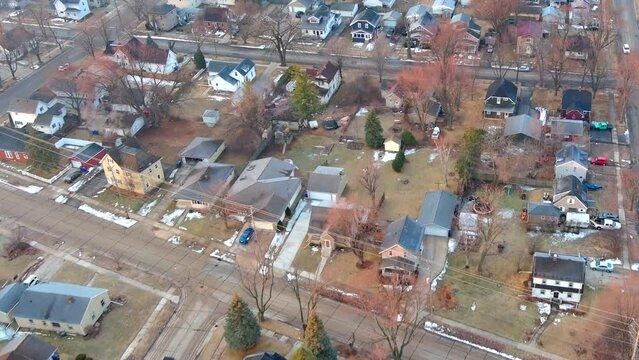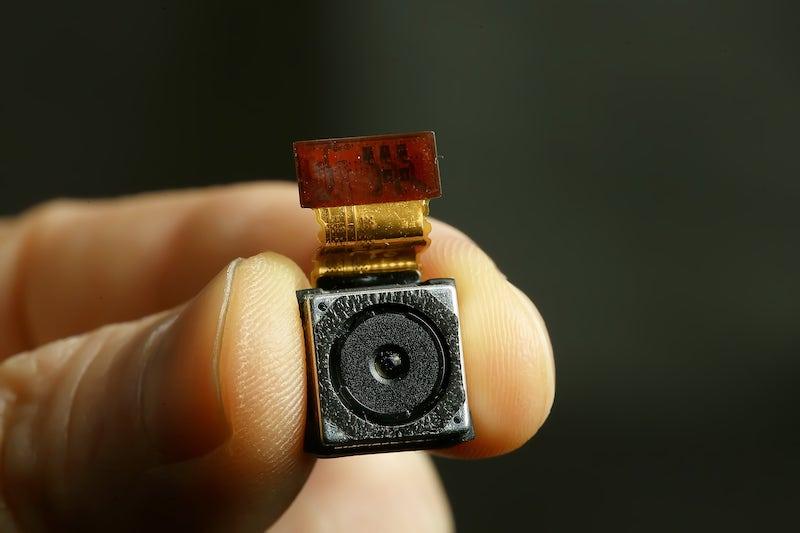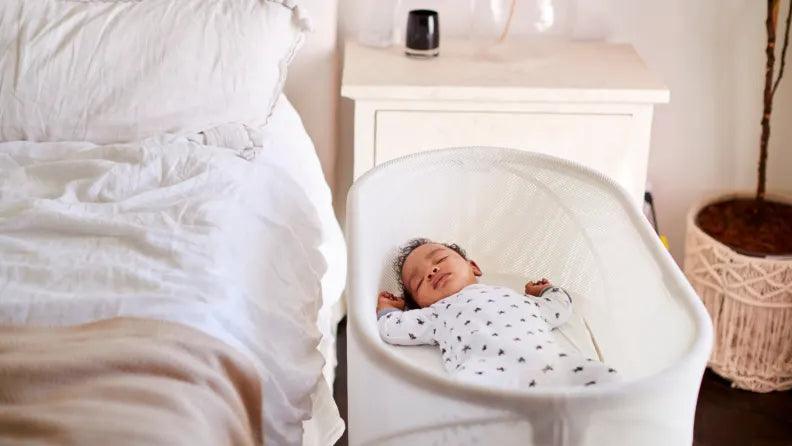Have you ever had that nagging feeling that something's just not right about the area you live in? Maybe it’s the streets littered with trash, or perhaps it's the noisy nights that never seem to end. Recognizing the signs of a bad neighborhood can be crucial, whether you're house hunting or considering a move. In this post, we’ll dive into 15 warning signs that suggest you might be living in a neighborhood that's not up to par. From safety concerns to the overall vibe, we'll cover all the bases so you can make informed decisions about your current or future living situation.
-
15 Signs That You're Living in a Bad Neighborhood
- 1. High Crime Rates
- 2. Visible Gang Activity
- 3. Poorly Maintained Properties
- 4. Trash and Litter
- 5. Abandoned Buildings
- 6. Lack of Community Facilities
- 7. Limited Shopping and Services
- 8. High Turnover Rate
- 9. Unfriendly or Isolated Neighbors
- 10. Poor Street Lighting
- 11. Poor Road Conditions
- 12. Limited Public Transportation
- 13. High Unemployment Rate
- 14. Drug Activity
- 15. Noise Pollution
- 6 Tips to Stay Safe in a Bad Neighborhood
- Conclusion
- FAQs
15 Signs That You're Living in a Bad Neighborhood
Living in a bad neighborhood can significantly impact your quality of life, safety, and overall well-being. Identifying the signs early can help you make informed decisions about your living situation. If you find yourself already residing in such an area, knowing how to stay safe is crucial. Here’s a comprehensive guide to recognizing the signs of a bad neighborhood and tips for staying safe.
1. High Crime Rates
Frequent reports of theft, vandalism, or violent crimes are major red flags. Checking local crime statistics can provide insight into the safety of an area. Areas with consistently high crime rates are often considered a bad neighborhood, risky to live or visit.
2. Visible Gang Activity
Gang presence is a critical indicator of a bad neighborhood, observed through graffiti with gang symbols, groups of gang members loitering, or frequent gang-related incidents. Gangs often engage in illegal activities, affecting safety and contributing to a sense of unease.
3. Poorly Maintained Properties
In a bad neighborhood, you'll notice homes or buildings with broken windows, peeling paint, overgrown yards, or structural damage. Neglected properties signal a lack of community investment and can attract pests and vermin, creating health hazards.

4. Trash and Litter
Streets and public areas filled with garbage and debris indicate a community in distress. This not only affects aesthetic appeal but also leads to health issues and attracts pests, contributing to a sense of neglect.
5. Abandoned Buildings
Numerous vacant homes or commercial buildings suggest economic decline. These properties can become hotspots for criminal activity, posing safety concerns and further degrading the neighborhood.
6. Lack of Community Facilities
A bad neighborhood often lacks essentials community amenities like parks, recreational centers, and libraries. A lack of these facilities indicates insufficient investment in residents' well-being, leading to social isolation and limited opportunities for community engagement.
7. Limited Shopping and Services
In a bad neighborhood, the scarcity of grocery stores, pharmacies, or other essential services makes daily life challenging. Residents may need to travel further for basic needs, impacting convenience and overall quality of life.

8. High Turnover Rate
Frequent moving in and out of residents signals instability. This instability makes it difficult for residents to form lasting relationships and social cohesion, which are vital for a healthy neighborhood. If your area has a high turnover rate, it could be an indication that you live in a bad neighborhood.
9. Unfriendly or Isolated Neighbors
Lack of community engagement or interaction among neighbors can create a feeling of isolation. Friendly and supportive neighbors are essential for a strong community, offering support and enhancing safety.
10. Poor Street Lighting
Adequate lighting is crucial for preventing crime and ensuring residents feel secure in their environment. Dim or non-functional streetlights make the area feel unsafe, especially at night. If you find your area poorly lit or with non-functional streetlights, it probably is a bad neighborhood.
11. Poor Road Conditions
Neglected infrastructure, such as potholes and cracked sidewalks, can also indicate a bad neighborhood. Well-maintained roads and sidewalks contribute to overall safety and mobility in a neighborhood.
12. Limited Public Transportation
Few or unreliable public transportation options can isolate residents and limit their access to jobs, education, and essential services. Reliable transportation is crucial for economic mobility and access to opportunities.

13. High Unemployment Rate
Economic stability is a key factor in the overall health and safety of a neighborhood. High unemployment among residents can lead to economic hardship and increased criminal activity, which are often indicators of a bad neighborhood.
14. Drug Activity
Visible drug dealing or usage is a serious red flag, posing immediate dangers and contributing to the overall decline of the neighborhood. It can lead to increased crime and health hazards.
15. Noise Pollution
Excessive noise from traffic, frequent loud parties, or other disturbances severely impacts the quality of life. Peaceful environments are essential for rest and well-being, contributing to overall health.
6 Tips to Stay Safe in a Bad Neighborhood
The best strategy is to avoid moving into a bad neighborhood in the first place. However, if you have already moved in or have no choice but to live in such an area, here are some tips to enhance your safety.
1. Install Security Cameras
Security cameras act as a deterrent to potential criminals and provide evidence in case of an incident. Place them in visible areas around your property to maximize their effectiveness. Modern security cameras, such as that provided by aosu, can be integrated with smartphone apps, allowing you to monitor your property remotely. This added layer of surveillance can give you peace of mind and help authorities quickly respond to any criminal activity, especially when you live in a bad neighborhood.
For comprehensive surveillance, aosu offers a range of security cameras, including many models of outdoor cameras, indoor cameras and video doorbells, each serving a unique purpose to help protect your home and property.

2. Have a Gun or Other Arms in Your House
If living in a bad neighborhood, while this can be a controversial suggestion, some people feel more secure having a firearm or other defensive tools in their home. Ensure you are trained in their use and comply with local laws regarding ownership and storage. Responsible gun ownership includes proper storage, such as using a gun safe, and understanding the legal implications of using a firearm in self-defense. Alternatives to firearms include non-lethal options like pepper spray or stun guns.
3. Consolidate All Entries and Windows
If you live in a bad neighborhood, you better reinforce doors and windows to make it more difficult for intruders to gain access. Consider installing deadbolt locks, security bars, and shatter-resistant film on windows. Reinforcing entry points not only deters break-ins but also buys you crucial time to react in case of an attempted intrusion. Simple measures like using door braces or installing peepholes can further enhance your security and give you greater control over who enters your home.
4. Carry Self-Defense Tools
When going out, carry items that can protect you in case of an emergency. This could be pepper spray, a personal alarm, or a small self-defense tool. Always be aware of your surroundings and avoid risky areas, especially at night. Self-defense classes can also equip you with skills to protect yourself in dangerous situations. Carrying a whistle or alarm can attract attention and deter potential attackers, making you feel more secure when you're alone in a bad neighborhood.
5. Use Good Lighting Around Your Property
Ensure your home’s exterior is well-lit. Motion-sensor lights are particularly effective in deterring potential intruders. Good lighting can eliminate hiding spots and make it more difficult for criminals to approach your property unnoticed. Consider installing lights at all entry points and in dark areas around your home to enhance visibility and deter suspicious activities.
Floodlight camera provided by aosu can make a big difference, as it combines powerful lighting and high-definition video surveillance to deter intruders and capture clear footage of any suspicious activity.

6. Practice Personal Safety Habits
Always lock your doors and windows, avoid walking alone at night, and be cautious when interacting with strangers. Personal vigilance is crucial for staying safe. Simple habits like checking your surroundings before entering your home, keeping emergency numbers handy, and maintaining regular contact with trusted friends or family can enhance your personal safety. Developing a routine that prioritizes security can help you stay alert and prepared in any situation.
More Security Tips:
How many security cameras do you need?
Can you block your neighbor's security cameras? And How?
How can I effectively burglar-proof my house?
10 signs your house is being watched by robbers
Conclusion
Living in a bad neighborhood poses numerous challenges, but being aware of the signs can help you make better decisions about where to live. If you find yourself in such an area, taking proactive steps to enhance your safety is vital. Remember, your safety and well-being are paramount. Stay alert, be prepared, and if possible, seek opportunities to move to a safer environment. Recognizing the signs of a bad neighborhood and knowing how to protect yourself can make a significant difference in your quality of life. By staying informed and taking the necessary precautions, you can mitigate the risks and ensure a safer living experience for you and your family.
FAQs
1. What should I do if I notice signs of gang activity in my neighborhood?
If you observe signs of gang activity, such as graffiti, groups of individuals loitering, or frequent altercations, it's important to report this to local authorities immediately. Avoid confrontation, and take steps to secure your property, such as installing security cameras and reinforcing entry points. Engaging in community efforts to discourage gang activity can also be helpful.
2. How can I make my home safer if I can't afford to move from the bad neighborhood?
If moving out from a bad neighborhood isn't an option, you can take various steps to enhance your home's security. Installing security cameras, reinforcing doors and windows, using good lighting around your property, and adopting personal safety habits are effective measures. Additionally, building strong relationships with neighbors can create a sense of community and mutual support.
3. What are some early warning signs of a neighborhood's decline?
Early signs of neighborhood decline include increasing vacancies, reduced municipal services (such as infrequent trash collection or road maintenance), a rise in crime rates, and a visible lack of investment in public spaces and infrastructure. If you notice these signs, it might be time to consider your options or take steps to safeguard your property and well-being.
4. How can I find out the crime rates in my neighborhood?
You can check local crime statistics through websites like FBI's Crime Data Explorer, local police department websites, or crime-mapping services like CrimeReports or SpotCrime. These platforms provide detailed information about recent crimes in your area, helping you gauge the safety of your neighborhood.










Zostaw komentarz
Ta strona jest chroniona przez hCaptcha i obowiązują na niej Polityka prywatności i Warunki korzystania z usługi serwisu hCaptcha.